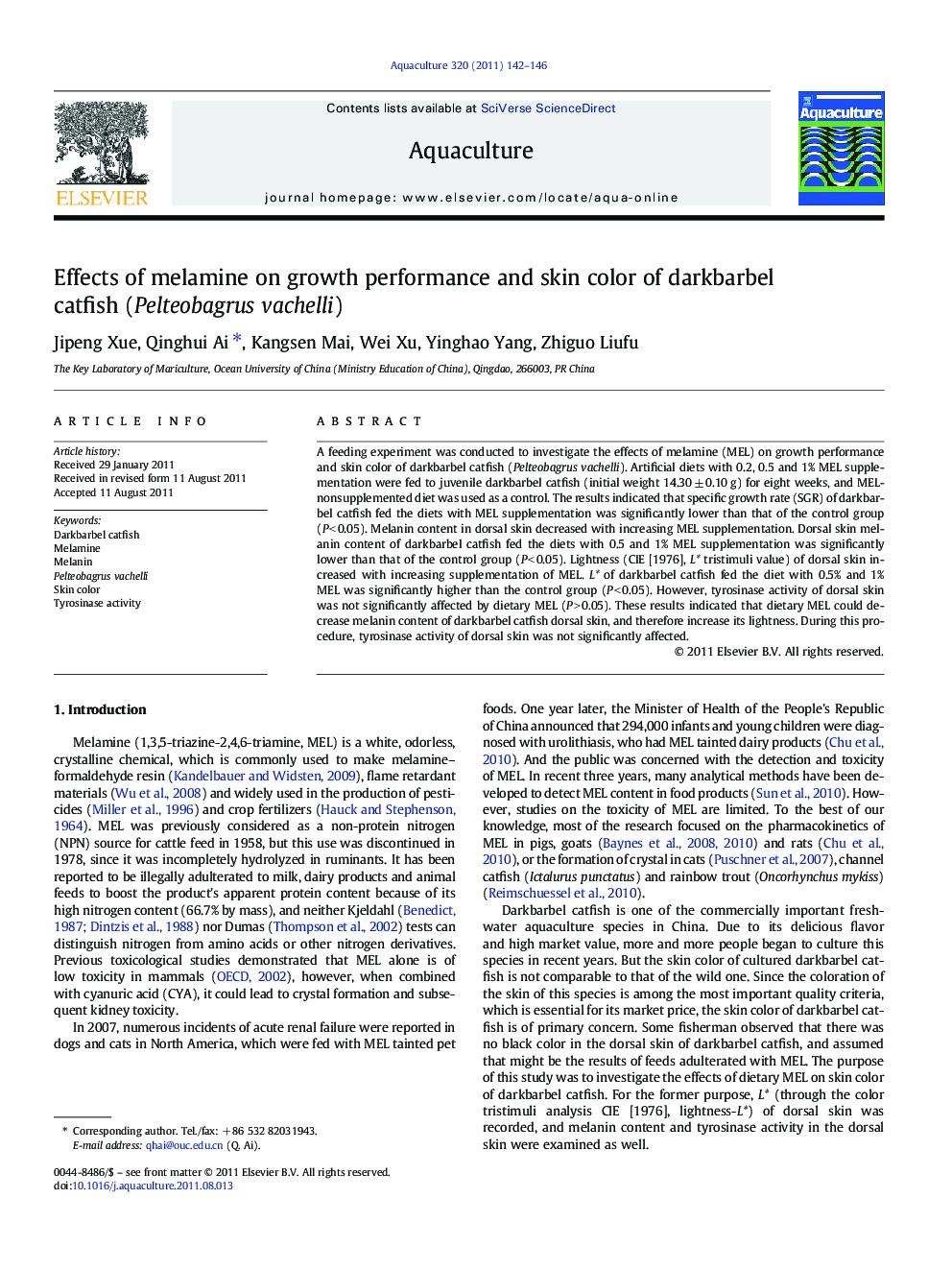| Article ID | Journal | Published Year | Pages | File Type |
|---|---|---|---|---|
| 2422984 | Aquaculture | 2011 | 5 Pages |
A feeding experiment was conducted to investigate the effects of melamine (MEL) on growth performance and skin color of darkbarbel catfish (Pelteobagrus vachelli). Artificial diets with 0.2, 0.5 and 1% MEL supplementation were fed to juvenile darkbarbel catfish (initial weight 14.30 ± 0.10 g) for eight weeks, and MEL-nonsupplemented diet was used as a control. The results indicated that specific growth rate (SGR) of darkbarbel catfish fed the diets with MEL supplementation was significantly lower than that of the control group (P < 0.05). Melanin content in dorsal skin decreased with increasing MEL supplementation. Dorsal skin melanin content of darkbarbel catfish fed the diets with 0.5 and 1% MEL supplementation was significantly lower than that of the control group (P < 0.05). Lightness (CIE [1976], L* tristimuli value) of dorsal skin increased with increasing supplementation of MEL. L* of darkbarbel catfish fed the diet with 0.5% and 1% MEL was significantly higher than the control group (P < 0.05). However, tyrosinase activity of dorsal skin was not significantly affected by dietary MEL (P > 0.05). These results indicated that dietary MEL could decrease melanin content of darkbarbel catfish dorsal skin, and therefore increase its lightness. During this procedure, tyrosinase activity of dorsal skin was not significantly affected.
► Specific growth rate (SGR) of darkbarbel catfish fed the diets with melamine (MEL) supplementation was significantly lower than that of the control group. ► Dietary MEL could significantly decrease melanin content in darkbarbel catfish dorsal skin, and therefore increased its lightness. ► However, during this process, tyrosinase activity of the dorsal skin was not significantly affected.
